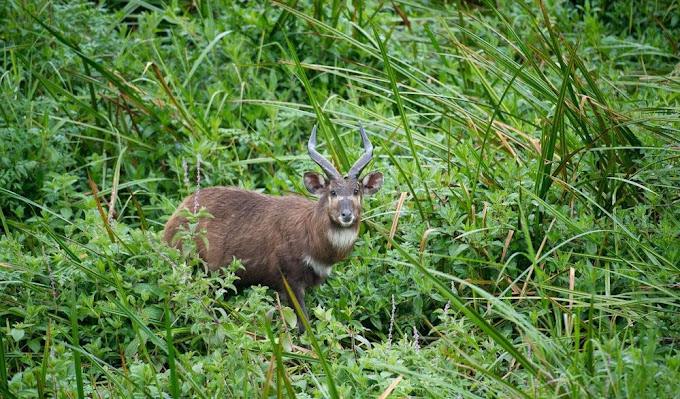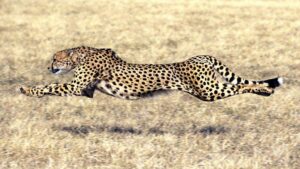How fascinating is it discovering the peaceful oasis Saiwa Swamp National Park Kitale, Kenya’s smallest park? With Naicef, get to explore the tranquil beauty of Saiwa National Park Kenya, home to the elusive Sitatunga Antelope. Saiwa Swamp National Park location offers one the chance to see different kinds of species within a small area.
For a safari tour to this forested paradise, reach out to Naicef via email my@naicef.com or tap +254799922277.
Naicef being the best tour company, also curates the best packages to all parks in Kenya and attractions in Nairobi.
Is Saiwa park worth visiting? You might wonder. Of course it is, and below are some of the fun facts;
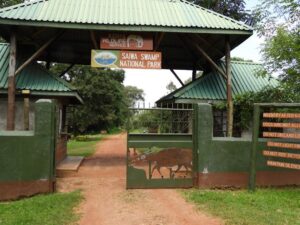
Interesting Facts About Saiwa Swamp National Park
a) Wildlife
Saiwa National Park Kenya offers the best spot to see the rare Sitatunga Antelopes. Also, Saiwa park is home to the De Brazza’s Monkey, an old-world monkey endemic in the Central regions of Africa.
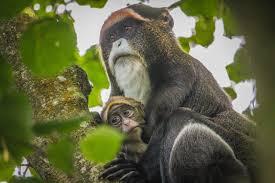
Moreover, the park provides shelter for other wildlife species such as reptiles, birds, insects and plants. Even though Saiwa park is the smallest park in Kenya, it is a bird haven harboring over 372 bird species.
It offers observation towers and safari walking trails to be able to enjoy this beautiful destination.
b) Flora
The park offers a mixed kind of forest and swampy vegetation harboring a diverse range of flora and habitat for different species. Some of the tropical wetland flora found in the park include;
Bulrushes, Orchids, Sedges, Reeds, and trees such as the Acacia tree, the Fig tree, and the Meru’s Khat tree.
c) Geographical Features
The 3 km² protected area is renowned to be Kenya’s smallest park, whereby walking in the park is allowed. It is also located in a swampy region, hence being a suitable place for the Sitatunga Antelope.
Do you know the History of Saiwa Swamp National Park Kitale?
Saiwa Swamp National Park was established in 1974 and is under the management of KWS. It was established as a protection dwelling place for the endangered Sitatunga Antelope and also the rare De Brazza’s Monkey.
Saiwa Swamp National Park Location
The park is located in Trans Nzoia County near Kitale in Kenya and has only one main gate, Saiwa Gate. It is located about 400 km Northwest of Nairobi, making it an extended safari to Western Kenya.
Some other touristic national parks you can visit in the Western region near Saiwa Swamp Park are such as;
the Kakamega Forest, which is Kenya’s only remaining tropical rainforest, and Mount Elgon National Park.
How to get to Saiwa National Park Kenya
By Road; Saiwa Park can be accessed via road from Nairobi to Kitale and then head for Kapenguria. At Kipsaina junction you follow the murram road to Saiwa gate, which is the only entrance to Saiwa National Park.
By Air; The park can also be accessed via air through Kitale Airstrip, which is 27 km from Saiwa gate.
Attractions in Saiwa National Park Kitale
a) Fauna
Saiwa National Park Kitale is home to a variety of wild species, from the herbivores, primates, and insects. Here are some of these species that shelter in this park;
(i) Sitatunga Antelopes
Also known as Marshbuck, the Sitatunga Antelope finds its dwelling in swampy or marshy places just like its name. It is a medium-sized Antelope mostly found in the Central Africa regions.
In Kenya, they are best found in Saiwa Swamp National Park.
They are usually active in the early mornings and late afternoons but spend the day submerged in water or resting in reedy shades. This attribute is why they are good swimmers.
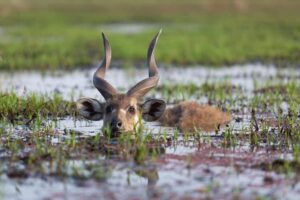
(ii) Monkeys
The park is also known to harbor a variety of primates, especially the rare De Brazza’s Monkey. Other monkeys that can be seen in the park are such as Vervet Monkeys and the Black-and-White Colobus.
(iii) Reptiles and Amphibians
Since the park is nestled on a swampy area, it is also home to a variety of amphibians. Some of them do include different types of Frogs, Toads, and the side-striped chameleon.
Some of the reptiles that can be seen are the Bell’s Hinged Tortoise, Blue-Headed Agama Tree Lizard, and the Forest Cobra.
(iv) Insects
Saiwa National Park Kenya, also harbors different types of insects such as the Damselflies and the Dragonflies.It is also home to various kinds of Butterflies such as the Charaxes and the Swallowtails.
(v) Birds Species
Saiwa Park recognizes itself as an Important Bird Area, entailing over 350 bird species. Some of the water birds include the Grey Heron, the African Black Duck, and the Lesser Jacana.
b) Flora
The park is composed of thrilling mixed forest and riverine swampy vegetation. Some of the plants found in this rich forested paradise are such as Orchids and Reeds.
Things to do in Saiwa Swamp National Park
1. Game Views
The park harbors a variety of wild species to be spotted, such as the Sitatunga Antelopes, Monkeys, among others. Due to its small size, the park only allows exploration of its entirety on foot, making the experience more thrilling.
Another interesting park that offers you a chance to explore its vicinity on foot is Hell’s Gate National Park.
2. Bird Watching
Are you a bird lover? Saiwa Park offers you the chance to view over 350 different kinds of bird species. Some of them do include the water birds such as African Black Duck and the Grey Heron.
Also check out Lake Nakuru National Park, another bird haven for bird watchers, with the help of Naicef.
3. Nature Guided Walks
The park offers a serene environment to exploit its rich biodiversity. It has a well-wooden and marked trail allowing visitors to traverse through the area easily.
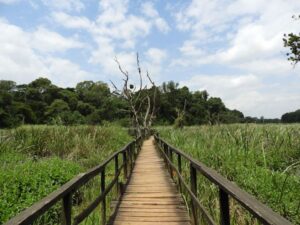
4. Picnicking
Saiwa National Park Kenya offers specific picnic points along the trails, giving rewarding and unforgettable memories. Enjoying a meal in the wild! Isn’t it amazing?
5. Camping
Ever thought of experiencing a night into the wild and being woken up by the chirping of birds on a great dawn? Saiwa Park offers you a chance to camp inside the park and enjoy the experience.
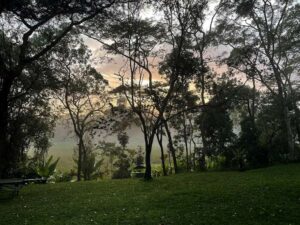
6. Corporate Events
Are you and your friends in search of an outdoor excursion? Saiwa swamp national park offers team building activities in the peaceful ambiance of Saiwa Swamp.
Saiwa Swamp National Park in Danger of Extinction
Even though the park has been experiencing danger of being extinct, conservation efforts are been made.
The major challenge faced in the park is the invasive species, especially the Narrow-leaved Cattail. Efforts placed, by assigning local members to cut down these invasive species, seem not to work as they are cut off as they grow again.
Some of the other threats are such as human encroachment and the drying of the upstream river, which is mainly contributed by human activities.
Some of the conservation efforts that have been put in place to protect this park include;
a) Community Alliance for Change (CAC). It is a non-profit environmental conservation organization that works closely with the local people. Its aim is usually to support environmentally friendly activities such as planting trees in the area.
b) International Tree Foundation (ITF). The organization aims to restore Saiwa Swamp National Park’s wetlands. ITF works with the local community of Saiwa to support local farmers and plant trees.
Saiwa Swamp National Park Entrance Fee
The following are the park fees for this majestic national park in Kenya;
a) High Season (July – March)
Saiwa Swamp National Park fee for Citizens and Residents
- Adult – Ksh 300
- Child/Student – Ksh 250
Saiwa Swamp National Park fee for Rest of Africa
- Adult – USD 20
- Child/Student – USD 15
Saiwa Swamp National Park fee for International Visitors
- Adult – USD 25
- Child/Student – USD 15
b) Low Season (March – June)
Saiwa Swamp National Park fee for Citizens and Residents
- Adult – Ksh 250
- Child/Student – Ksh 200
Saiwa Swamp National Park fee for Rest of Africa
- Adult – USD 15
- Child/Student – USD 10
Saiwa Swamp National Park fee for International Visitors
- Adult – USD 20
- Child/Student – USD 15
Best Time To Visit Saiwa National Park
Saiwa park can be accessed throughout the year, but it is best for wildlife viewing during the dry season. This period is usually between December and March.
Accommodations Near Saiwa Swamp National Park
KWS does manage the accommodation places that are inside the park such as the Sitatunga Public Campsite and Tree Top Hut. The Tree Top Hut is an ideal unique tree house located deep in the nature of the Saiwa swamp.
Some of the other suitable places to stay as you enjoy visiting the park are;
- Le Voyage Resort
- Villa Serene Hotel
- Deep Sea Resort
- Karibuni Lodge
- Elgon View Hotel
- Sophie’s Garden Hotel
Book with Naicef to be able to experience a luxurious stay during your tour!
Conclusion
Saiwa Swamp National Park is known to be a sanctuary for the Sitatunga Antelopes in Kenya and also for the De Brazza’s Monkey.
It is the smallest national park in Kenya covering an area of 3km sq, making exploration possible on foot.
The park was established in 1974 and is under the management of Kenya Wildlife Service.
Saiwa Swamp National Park is in Trans Nzoia County near Kitale in the Rift Valley region. This then makes the park 400 km Northwest from Nairobi and can be accessible via road or air.
Saiwa Swamp National Park Kitale is home to different kinds of flora and fauna. Some of the attractions include the different mix of forest vegetations, animals such as reptiles and insects.
Some of the fun things to do in Saiwa National Park, Kenya, include;
Game viewing, camping, bird watching, picnics, team building activities, and nature walks.
Even though Saiwa Park has been experiencing threats to extinction, some of the conservation initiatives include;
Community Alliance for Change and the International Tree Foundation, organizations aiming to preserve the park’s biodiversity.
In search of other interesting stories on parks in Kenya? Consider Naicef, the top leading blog in Africa. By booking with Naicef, always remember that you contribute to sustainable African safari practices.
Frequently Asked Questions About Saiwa National Park (FAQs)
1. What is Saiwa National Park known for?
Saiwa Swamp National Park is for its entailments such as the rare Sitatunga Antelope and its swampy vegetations.
2. What are some of the animals found in the park?
The park is home to a wide array of wild species such as the Sitatunga, Monkeys, Reptiles, Insects and Birds.
3. What fun activities can one do in the park?
In the park, one can enjoy game views, bird watching, photography, picnics, team building and camping.
4. What are some of the birds one can see in the park?
They do include the Ross’s Turacos, Grey Heron, African Black Duck, Grey Crowned Crane, Ibis among others.
5. How can I access the park?
The park can be accessible via road from Kitale or even via air through Kitale Airstrip.
